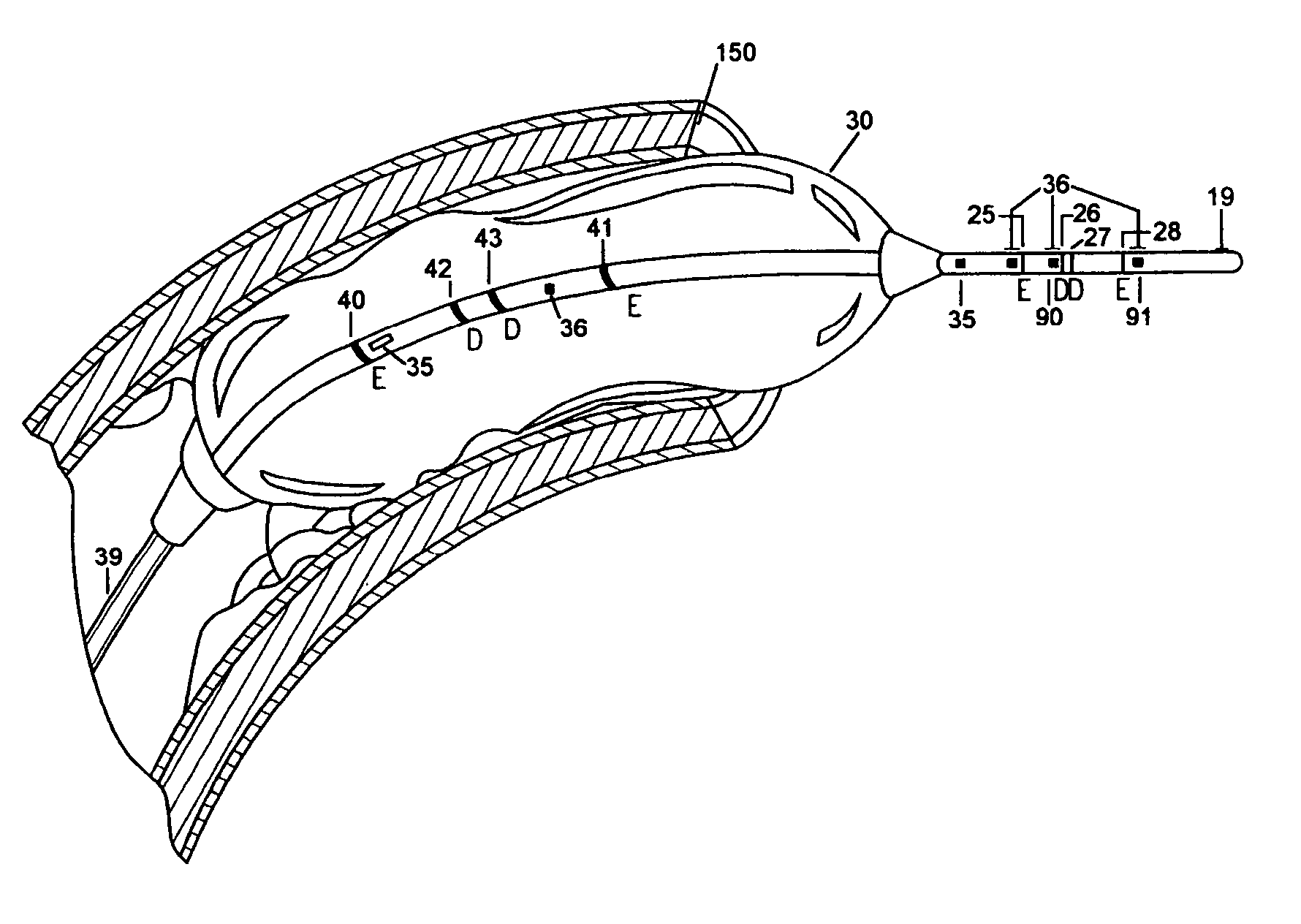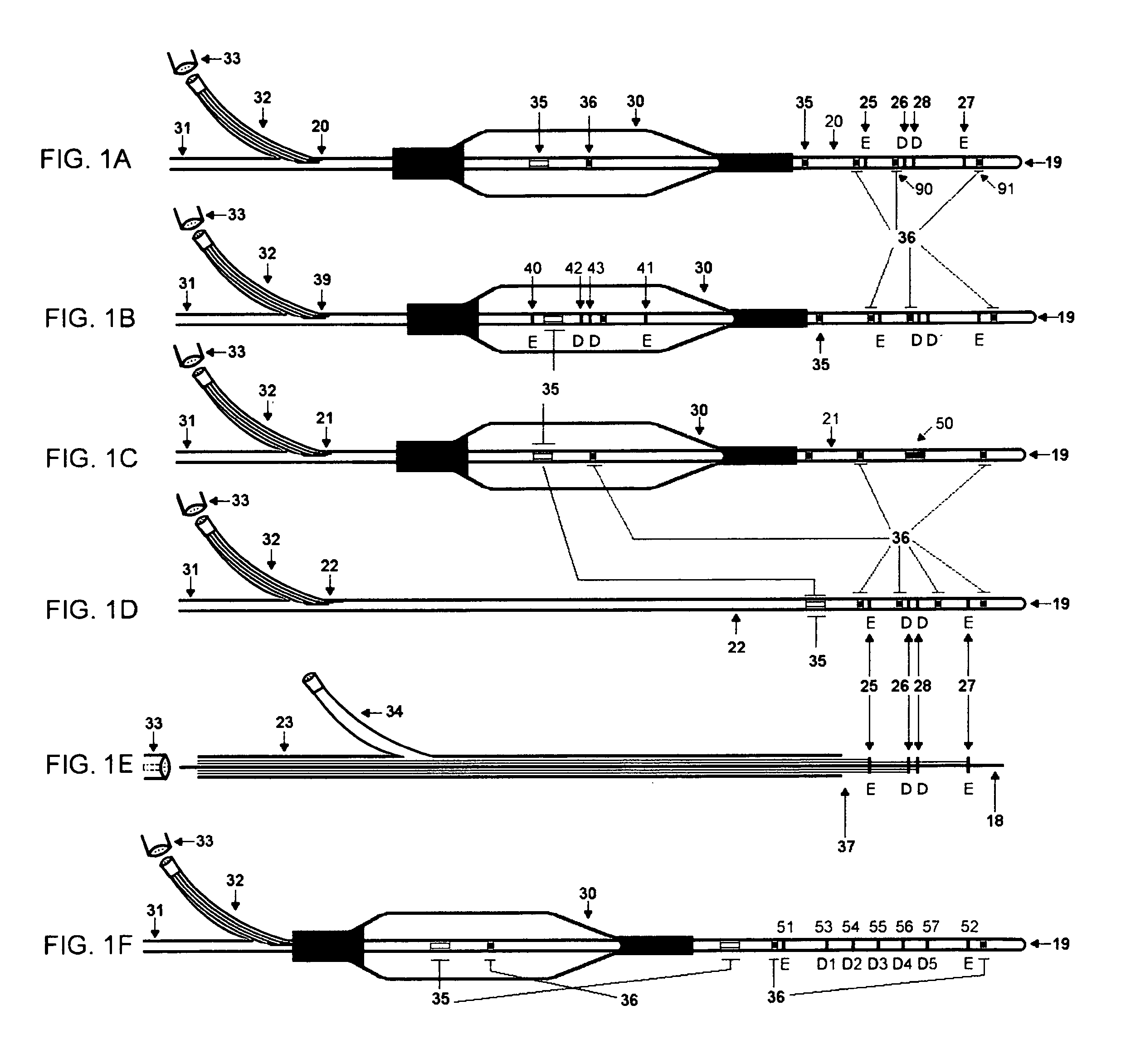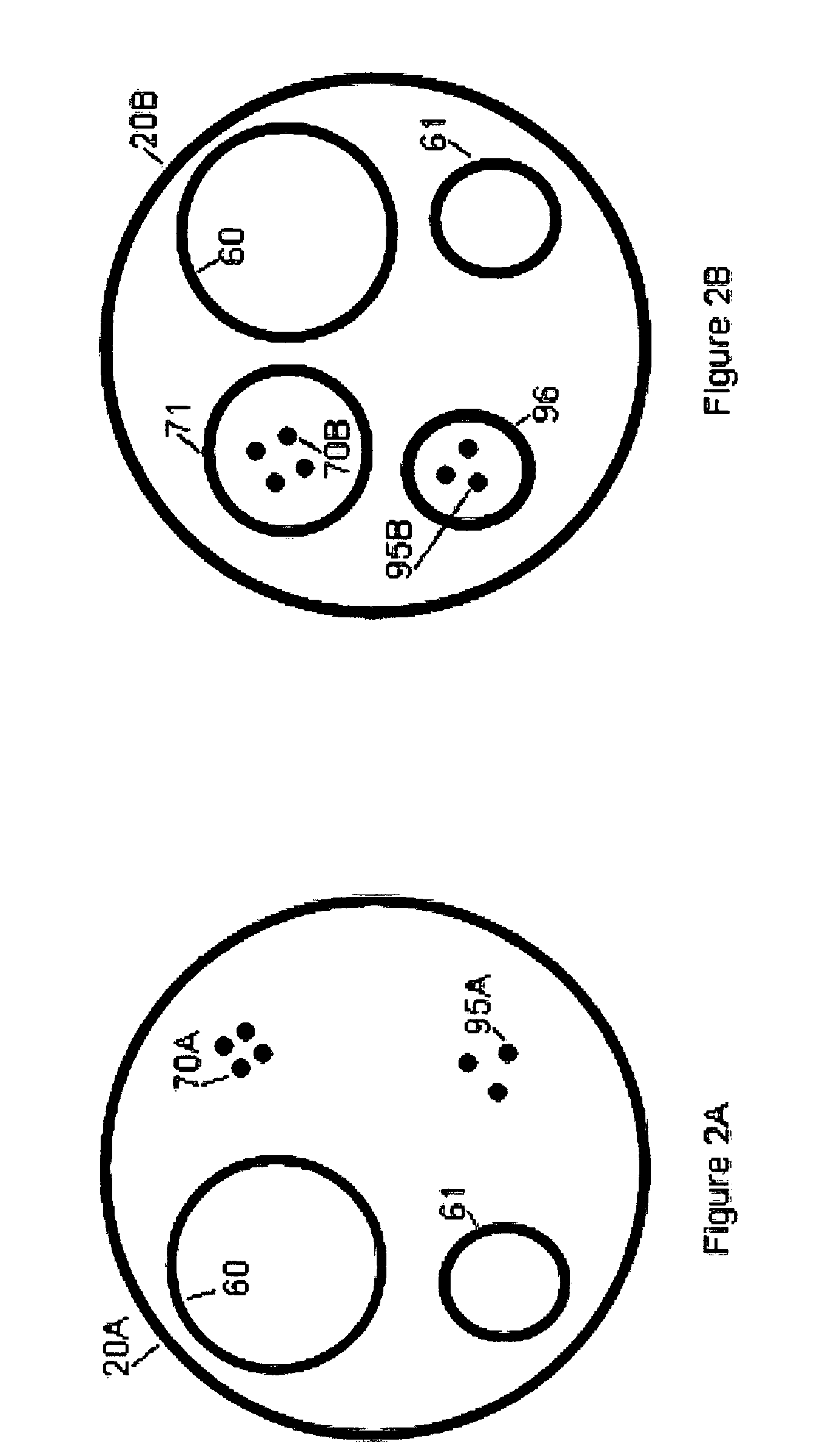Devices, systems and methods for plaque type determination
a plaque type and device technology, applied in the field of medical diagnostics and treatment, can solve the problems of high risk of rupture of cholesterol, lack of sufficient spatial resolution of characterization of atherosclerosis by mri, and low accuracy of mri, so as to achieve easy reproducibility, reduce the risk of rupture, and improve the effect of mri
- Summary
- Abstract
- Description
- Claims
- Application Information
AI Technical Summary
Benefits of technology
Problems solved by technology
Method used
Image
Examples
Embodiment Construction
[0039]This invention makes easy, accurate and reproducible measurements of the type or composition of plaques in blood vessels within acceptable limits. This enables the determination of a plaque type and / or composition in order to improve patient health by allowing early treatment options for undersized (but potentially dangerous) plaques that could dislodge and cause infarcts or other health problems.
[0040]In the pending parent application, which is incorporated by reference herein in its entirety, a novel technique is introduced that allows the determination of vessel lumen CSA based on an electrical impedance principle. The technique also allows the determination of current loss through the vessel wall, for example, the parallel conductance (Gp). Briefly, the methodology involves a multi-injection technique including slightly hypertonic and slightly hypotonic solutions. The two injections with known conductivities allow the measurement of the total conductance for each injection...
PUM
| Property | Measurement | Unit |
|---|---|---|
| diameter | aaaaa | aaaaa |
| distance | aaaaa | aaaaa |
| distance | aaaaa | aaaaa |
Abstract
Description
Claims
Application Information
 Login to View More
Login to View More - R&D
- Intellectual Property
- Life Sciences
- Materials
- Tech Scout
- Unparalleled Data Quality
- Higher Quality Content
- 60% Fewer Hallucinations
Browse by: Latest US Patents, China's latest patents, Technical Efficacy Thesaurus, Application Domain, Technology Topic, Popular Technical Reports.
© 2025 PatSnap. All rights reserved.Legal|Privacy policy|Modern Slavery Act Transparency Statement|Sitemap|About US| Contact US: help@patsnap.com



